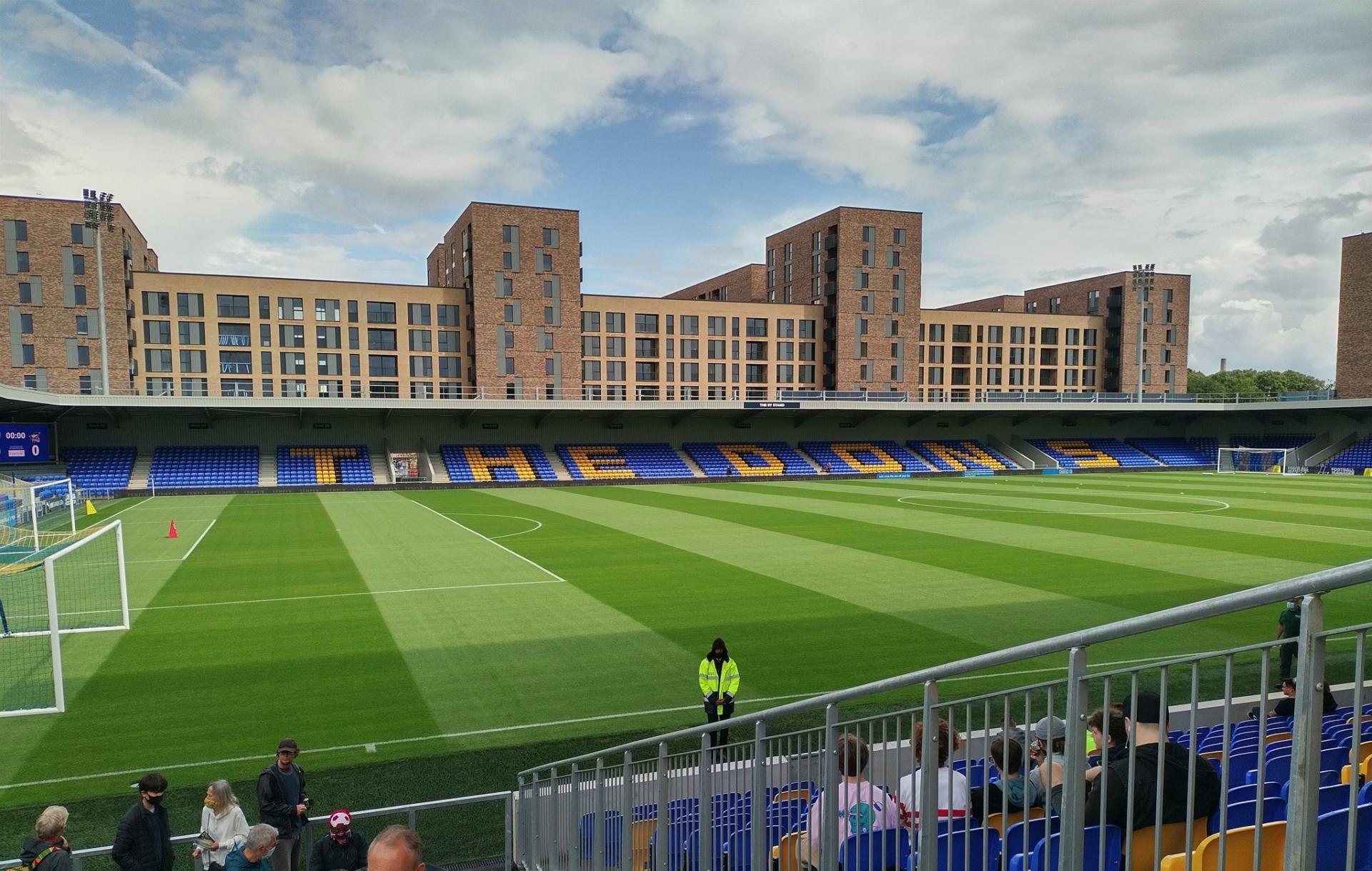
The Journey of Wimbledon: From 1889 to AFC Wimbledon
Since 1889, there has been a team in blue under the name of Wimbledon playing their football in London. AFC Wimbledon fans have seen everything from non-league to FA Cup winners and everything in between. When an independent commission relocated the club to Milton Keynes in the early 2000s, you could forgive the Wimbledon fans for losing hope about their footballing future. Fast forward to the present day however, and I’m sure that no fan would quite believe the journey that followed the infamous decision by the Football Association to move a team 56 miles away.
During the summer of 2002, a group of Wimbledon supporters met over a few drinks and ultimately decided to start the team from scratch. Over 200 hopeful players attended trials on Wimbledon Common, and not long after, they formed an eventual squad, appointed a manager, and created a crest. It was from that moment, that AFC Wimbledon was born.
AFC Wimbledon: Fans Ownership
Owned by the fans, AFC Wimbledon shot up through the leagues of the football pyramid. They were quick out of the blocks during the inaugural season in 2002/03, setting a new record for the longest run of unbeaten league games at any level of senior football in the United Kingdom (78 matches to be precise). The records fell and promotions continued, culminating in a play-off final against Luton Town in 2011. Their fate was decided by a penalty shootout, in which Wimbledon won 4-3.
Danny Kedwell’s winning spot-kick represented all the anger and hurt that the fans had experienced, and, in that moment, they forgot everything. To see the ball hit the back of the net meant that after five promotions in just nine years, a team from Wimbledon was rightfully back in the football league.
The Rise and Challenges of AFC Wimbledon
After several seasons spent fighting in League Two, followed by yet another promotion, Wimbledon reached their current peak of a 15th-placed finish in England’s third tier. The building of a new stadium just a stone’s throw from the site of their original stadium, ‘Plough Lane’, was the icing on the cake of their unprecedented rise from nothing to an established football league club. All of this had been achieved through 100% fan ownership.
Understandably, the club operates with one of the smallest budgets in the whole of the football league, largely due to their ownership model. The relegation at the end of the 2021/22 season increased scrutiny on the model, especially due to the departure of notable players that contributed to the lack of on-pitch success.
The Debate on Ownership: Fan-Owned vs. Outside Investment
Within the fanbase, you have two very distinct groups of supporters; those in favour of outside investment into the club versus those who believe that the club should stay 100% fan-owned. It is fair to say that fan ownership has a ceiling, especially in today’s money-obsessed game. However, many supporters who experienced the relocation are hesitant to trust any third-party ownership, and rightfully so. So, where do they go from here?
AFC Wimbledon are currently entering their third season in League Two having narrowly missed out on the play-offs last year. It was a promising campaign under boss Johnnie Jackson, who will be hoping that he can guide his team at least one step further this coming season. With the new stadium providing increased revenue and the COVID-19 pandemic in the rear-view mirror, there is reason to be optimistic. In the 2022/23 season, AFC Wimbledon were one of only six clubs not to record a financial loss. Considering the average League Two club loses £2 million a season, the modest yet sustainable fan ownership model proves its worth.
The Dons Trust – who are the registered owners of AFC Wimbledon – have pledged that they will always retain at least 50.01% of equity within the club. In theory, this would encourage outside investment into the team while still retaining majority ownership. Does this arrangement satisfy supporters on both sides of the ownership argument? I would say that it does, for now.
The long-term ambition of the club is to return to the Championship, which they believe can be achieved as a majority fan-owned team. Whether or not this comes to fruition, time will tell. One thing I am sure of though is that we haven’t heard the end of this debate.
Image Credit: Matt Singfield

